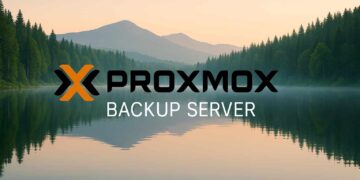This session covered many of the new and cool storage features in vSphere 5.0. The speaker mentioned that if you think vSphere 4.0 was ‘for networks’ then vSphere 5.0 is ‘for storage.’ Many of the cool tools such as DRS that you are used to for compute/memory resources are now extended to storage. Highlights include:
- VMFS5 has many great enhancements:
- 64TB LUN support without any extents
- 130,689 small files per datastore
- 64TB pRDM
- Consistent 1MB block size. No more trying to choose the right block size.
- VAAI ATS is extended to all metadata locks, not just some operations
- Sub-blocks are reduced to 8KB, down from 64KB in VMFS3. Up to 30K sub-blocks.
- Small file support for files up to 1KB in size. These small files are actually stored in the VMFS metadata, then migrated to sub-blocks between 1KB and 8KB, then migrated to a full block between 8KB and 1MB.
- LUNs 2TB and larger use GPT
- VMFS3 LUNs that are migrated to VMFS5 and extended to >2TB will be seamlessly converted to GPT
- Best practice for upgrading to VMFS5 is to create a new datastore and migrate VMs. Upgraded datastores won’t have all the features of a native VMFS5 volume.
- VAAI has been extended to NAS and supports full file clone, reserve space, and fast file clone for linked clones. Clones will also be block aligned for better performance.
- VAAI also now supports dead space reclamation and out of space conditions (VM stun). Arrays can now de-allocate blocks when a VM is moved to another datastore.
- VASA allows array vendors to expose phyical LUN characteristics to vCenter, such as RAID level, disk type, etc. Array vendors must create a provider to enable VASA reporting.
- Profile driven storage lets you tag a datastore with characteristics (e.g. Gold, Silver, bronze) so you can place VMs on the correct storage without consulting complex spreadsheets or weird datastore names. Can populate tags manually or leverage VASA.
- Storage DRS measures free disk space and latency to determine if a VM should be migrated. This also automates datastore selection and uses advanced load balancing algorithms. Latency is measured over 24 hours and every 8 hours it is evaluated. If over 15ms for 90% of the time, then sDRS will take action.
- Datastore clusters let you group together datastores of the same type, which then ties into sDRS.
- Datastore clusters have placement rules- Intra-VM VMDK affinity, VMDK anti-affinity, VM anti-affinity rules.
- Datastores can now be placed in maintenance mode and sDRS will evacuate the LUN to other LUNs in the cluster using smart placement rules.
- storage vMotion now works with VMs that have snapshots and linked clones.
- sVM uses a fast migration technique that mirrors writes to source and destination VMDKs so that only one copy pass is required.
- vSphere 5.0 supports software FCoE initiator, like iSCSI, but does have hardware dependencies.
Whew…that’s just a high level overview of the new storage features. There are other sessions that go into much more depth for many of these features. Needless to say storage has gotten a lot of attention in vSphere 5.0. Be sure to prod your storage array vendor for vSphere 5.0 VAAI and VASA support.



